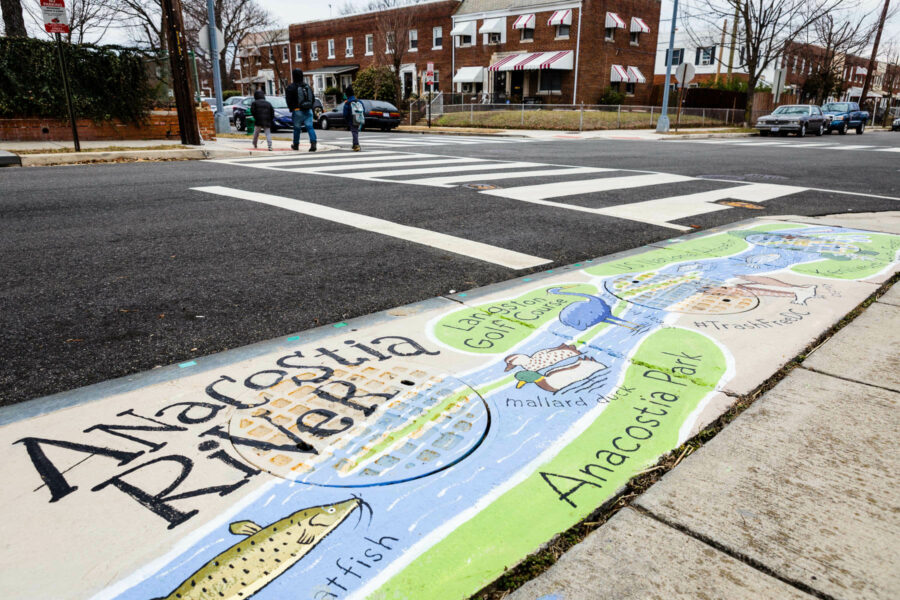Raising awareness through art
Painted storm drains highlight the link between our actions and the environment

When you think of what feeds your local waterway, you probably imagine smaller rivers flowing into each other upstream. What you may not think of is the overlooked storm drain on the curbside. Anacostia Watershed Society is trying to change that with their storm drain mural project, which was funded by DOEE's 2017 Community Stormwater Solutions Grant. The murals highlight the direct connection between what goes down the storm drain and what ends up in our environment.
It’s not just rain that flows into storm drains. Stormwater can pick up fertilizer, pet waste, chemical contaminants, dirt and litter. Since stormwater is not treated, the mix flows directly into the nearest body of water. The pollution from stormwater can lead to algal blooms and cloudy or contaminated water, both of which harm plants, fish and wildlife.
Polluted stormwater is the fastest growing source of pollution to the Chesapeake Bay. By drawing attention to storm drains through works of art, Anacostia Watershed Society hopes to make residents think twice about the impact they have on the health of their environment.
 Because of toxins in the Anacostia, many of the catfish have tumors or lesions. This mural by Gean Martinez illustrates the connection between what goes down our storm drains and the health of fish and wildlife. (Photo by Will Parson/Chesapeake Bay Program)
Because of toxins in the Anacostia, many of the catfish have tumors or lesions. This mural by Gean Martinez illustrates the connection between what goes down our storm drains and the health of fish and wildlife. (Photo by Will Parson/Chesapeake Bay Program)
There are many actions residents can take to lessen stormwater runoff. Using rain barrels or rain gardens can help stormwater to infiltrate and naturally filter, rather than running into storm drains. Homeowners can choose to install green infrastructure like permeable pavement to lessen runoff from their driveway or sidewalk. Making sure to properly dispose of pet waste, trash and yard debris can help to ensure that they don’t end up in the Bay.
Learn more about green infrastructure and the effects of stormwater runoff.

Comments
There are no comments.
Thank you!
Your comment has been received. Before it can be published, the comment will be reviewed by our team to ensure it adheres with our rules of engagement.
Back to recent stories